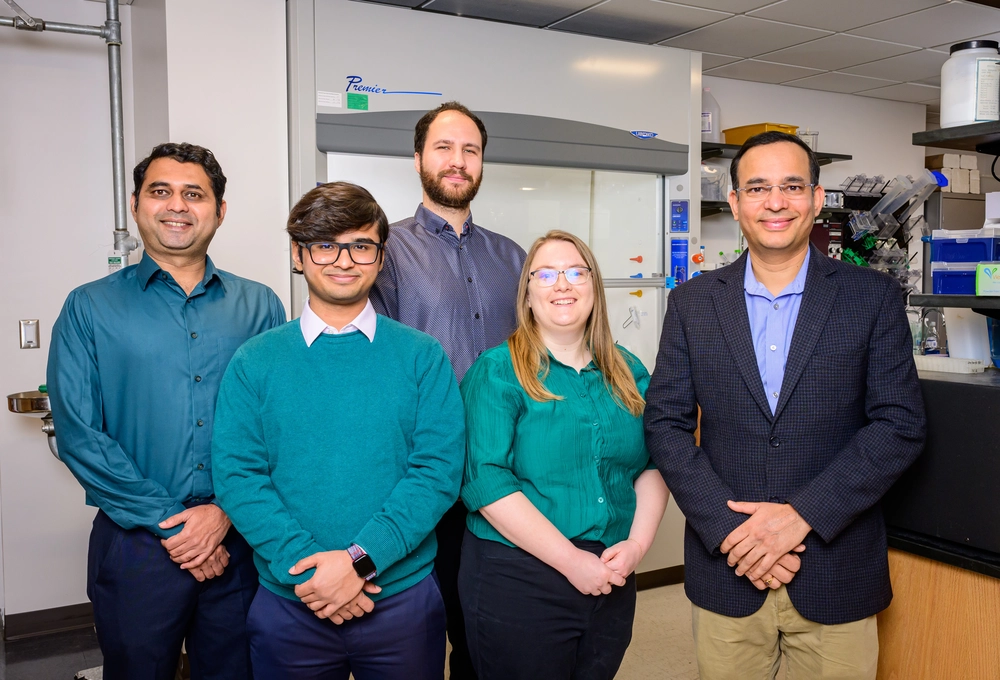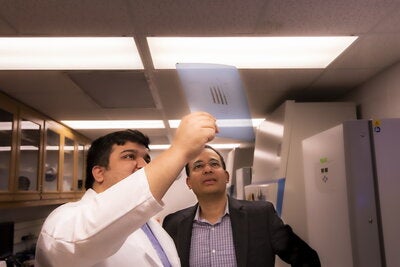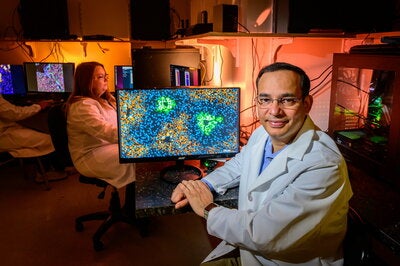
Researchers from the University of Illinois have identified a key process coordinating liver maturation and polyploidization, a state in which cells carry more than two sets of chromosomes. Their findings, published in Genes and Development, provide insight into hepatocyte specialization that will aid efforts in regenerative medicine.
The human liver performs over 150 specialized functions, including filtering blood, removing waste, regulating blood sugar, and digesting fats. Hepatocytes — the main cell type of the liver — are fully formed by birth but remain dormant for the first few weeks of life. During this time, they gradually mature and develop specialized attributes. For decades, biologists have wondered how liver cells mature after birth and achieve their dedicated functions. Further, how can scientists use this knowledge to improve regeneration of the liver, the only internal organ that can regenerate or repair itself after injury?
“Over the past 15 - 20 years, biologists have gotten good at isolating stem cells,” said Nash Kalsotra, a professor of biochemistry and the lead author of the paper. “We can differentiate the stem cells into various cell types, which has lots of promise in regenerative biology. And we can provide these cells to damaged organs, but they function poorly because they are stuck in an immature fetal-like state. So, the question is: ‘How do we take these rudimentary cells and help them mature?’ That’s the next frontier in biology we need to cross,” said Kalsotra, who is also a Chan Zuckerburg Biohub Chicago Investigator and a faculty member at the Carl R. Woese Institute for Genomic Biology, the Cancer Center at Illinois, and the Division of Nutritional Sciences at Illinois.
Kalsotra’s lab seeks to answer this question by examining how hepatocytes normally achieve maturity after birth. For the current study, they began by evaluating the epithelial factor ESRP2, a regulatory protein known to control RNA splicing in the liver. Absent in the fetus, ESRP2 is activated after birth.
“We know (ESRP2) is turned on right around the time when liver cells start to mature, but is that a coincidence, or is ESRP2 protein actually involved in liver maturity?” said Dr. Sushant Bangru (PhD, '21, biochemistry) and the first author of the study.

Lab members approached this problem with a mixture of clever genetics, single-cell transcriptomics and imaging approaches, generating mice models that allowed them to turn ESRP2 protein function on and off at will. ESRP2 removal from hepatocytes made the adult livers immature, while earlier-than-normal ESRP2 activation in the mouse pup livers accelerated their maturation and metabolic functions. The conclusion? ESRP2 is a determinative factor with a direct effect on liver function that prompts hepatocytes’ shift to maturity.
“We have noticed that post-transcriptional regulation fine-tunes the final phases of gene expression,” Kalsotra said. “There are many changes in alternative splicing used to produce the right assortment of protein variants in a maturing liver. This is an example of a qualitative change — using the same gene but getting a different product. There are also many quantitative changes through microRNAs, which reduce the overall amount of certain RNAs and fine-tune the amounts of proteins in liver cells.”
Next, the Kalsotra lab worked to find both direct and indirect targets of ESRP2, unraveling its entire regulatory network. Surprisingly, they observed a large volume of ESRP2 binding to non-coding microRNA-122 (miR-122), a known regulator of hepatocyte polyploidy.

“The liver acquires a high percentage of polyploid hepatocytes after birth, and the mechanism for hepatocyte polyploidization is through miR-122-driven cytokinesis failure, the final stage of cell division where the cytoplasm of a single cell divides into two separate daughter cells,” Kalsotra said. “The postnatal surge in ploidy is crucial for the functional specialization of hepatocytes, and it protects the liver against future incidence of cancer.”
The team found that ESRP2 activity is required for the timed production of miR-122 and liver polyploidization after birth. How ESRP2 directs RNA splicing or optimizes the production of miR-122 to steer ploidy is an outstanding question that the Kalsotra Lab is working to answer next.
“The liver does not have a dedicated reservoir of stem cells,” Kalsotra said. “Only existing, healthy liver cells can produce new cells in adults. Normally, hepatocytes are quiescent, but in cases of injury or death, the surviving hepatocytes first lose their maturity before dividing. Right now, we’re learning how we can coax the adult cells to become immature and then back to fully functional. And that will help us tune the regenerative response relative to the need of an organism.”
The research team also included U. of I. Biochemistry visiting Research Scientist Sandip Chorghade; graduate students Nicholas Baker, Diptatanu Das, Ullas V. Chembazhi, Jessica M. Derham, and Waqar Arif; undergraduate student Jackie Chen; Frances Alencastro and Andrew W. Duncan, of the University of Pittsburgh; and Russ P. Carstens, of The University of Pennsylvania.
This research was funded by the National Institutes of Health; Muscular Dystrophy Association; and the Chan Zuckerberg Biohub Chicago Initiative.
Main cover image by Fred Zwicky.
